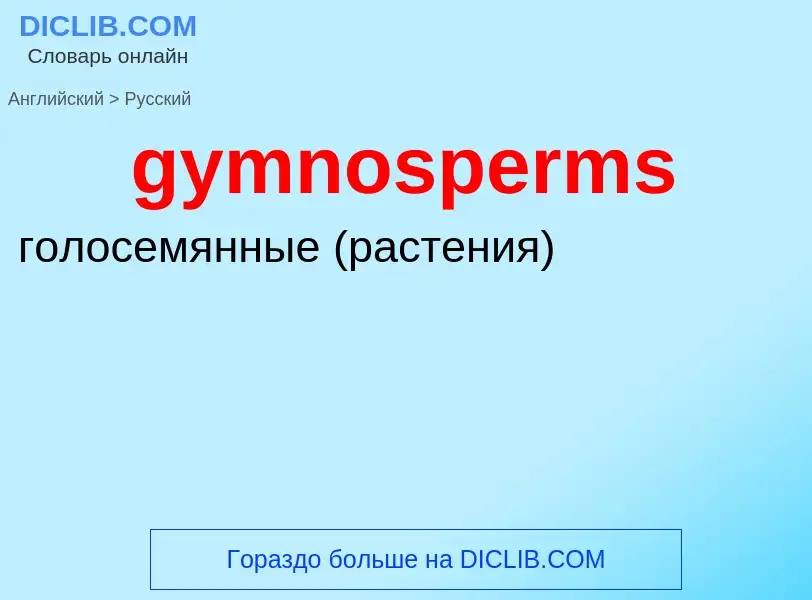Tradução e análise de palavras por inteligência artificial ChatGPT
Nesta página você pode obter uma análise detalhada de uma palavra ou frase, produzida usando a melhor tecnologia de inteligência artificial até o momento:
- como a palavra é usada
- frequência de uso
- é usado com mais frequência na fala oral ou escrita
- opções de tradução de palavras
- exemplos de uso (várias frases com tradução)
- etimologia
gymnosperms - tradução para russo
общая лексика
голосемянные растения (Gymnospermae)
общая лексика
голосемянные
Definição
Wikipédia

The gymnosperms ( pronunciation lit. revealed seeds) are a group of seed-producing plants that includes conifers, cycads, Ginkgo, and gnetophytes, forming the clade Gymnospermae. The term gymnosperm comes from the composite word in Greek: γυμνόσπερμος (γυμνός, gymnos, 'naked' and σπέρμα, sperma, 'seed'), literally meaning 'naked seeds'. The name is based on the unenclosed condition of their seeds (called ovules in their unfertilized state). The non-encased condition of their seeds contrasts with the seeds and ovules of flowering plants (angiosperms), which are enclosed within an ovary. Gymnosperm seeds develop either on the surface of scales or leaves, which are often modified to form cones, or on their own as in yew, Torreya, Ginkgo. Gymnosperm lifecycles involve alternation of generations. They have a dominant diploid sporophyte phase and a reduced haploid gametophyte phase which is dependent on the sporophytic phase. The term "gymnosperm" is often used in paleobotany to refer to (the paraphyletic group of) all non-angiosperm seed plants. In that case, to specify the modern monophyletic group of gymnosperms, the term Acrogymnospermae is sometimes used.
The gymnosperms and angiosperms together comprise the spermatophytes or seed plants. The gymnosperms are subdivided into five Divisions, four of which, the Cycadophyta, Ginkgophyta, Gnetophyta, and Pinophyta (also known as Coniferophyta) are still in existence while the Pteridospermatophyta are now extinct. Newer classification place the gnetophytes among the conifers.
By far the largest group of living gymnosperms are the conifers (pines, cypresses, and relatives), followed by cycads, gnetophytes (Gnetum, Ephedra and Welwitschia), and Ginkgo biloba (a single living species). About 65% of gymnosperms are dioecious, but conifers are almost all monoecious.
Some genera have mycorrhiza, fungal associations with roots (Pinus), while in some others (Cycas) small specialised roots called coralloid roots are associated with nitrogen-fixing cyanobacteria.


![''[[Encephalartos sclavoi]]'' cone, about 30 cm long ''[[Encephalartos sclavoi]]'' cone, about 30 cm long](https://commons.wikimedia.org/wiki/Special:FilePath/Encephalartos sclavoi reproductive cone.jpg?width=200)
.png?width=200)

